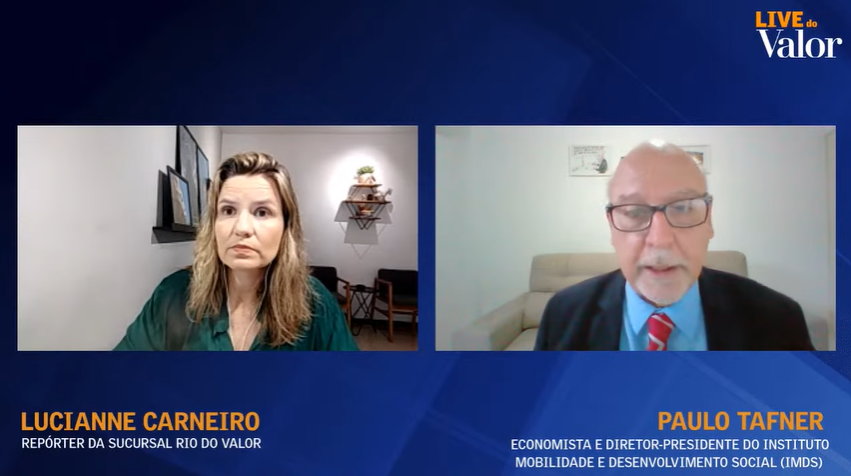This website uses cookies so that we can provide you with the best user experience possible. Cookie information is stored in your browser and performs functions such as recognising you when you return to our website and helping our team to understand which sections of the website you find most interesting and useful.

Paulo Tafner on “Live do Valor”: the increase in poverty in Brazil and the prospects for the national scenario
The economist and CEO of the Institute for Mobility and Social Development (IMDS), Paulo Tafner, was the interviewee of “Live do Valor” on Wednesday (August 10). Conducted by journalist Lucianne Carneiro, from the newspaper Valor Econômico. The interview addressed the increase in poverty in Brazil in 2021, the perspectives for the national scenario and the implication for inequality, analyzing the impact of the increase in poverty on the chances of social mobility and the future of current generations. The economist also commented on the outlook for the evolution of poverty in the coming years.
In an initial context, Tafner portrayed the study developed by IMDS, which brings poverty data up to 2021, and what lies ahead. The study shows that the country reached a peak in poverty that year, when 22.3% of the Brazilian population was in poverty, which is equivalent to about 47 million people. “Poverty is an arbitrary line and the severity of poverty is how close or far from this line you are,” he says. “There are more poor people and poorer people. This makes the situation especially serious.”
Tafner also explained that IMDS uses, in its research, the poverty line developed by IBGE, IPEA and ECLAC. The tool is composed of regionalized lines (there are 24 regional lines), which reflect the consumption profiles of each Brazilian locality and express relative prices for different regions. The data takes into account purchasing power and price structure. The lines are updated annually by the National Consumer Price Index, the INPC.
Paulo Tafner also highlighted the difference between poverty and extreme poverty. Extreme poverty, which, in technical terms, is exactly half the poverty line, is translated as being a situation that can put people’s very survival at risk. He also commented on the great problem of the distribution of poverty and extreme poverty in the national territory, which aggravates the situation.
Asked about the measures needed to address the country’s poverty issue, Tafner said the answer lies in “small, partial and progressive improvements.” In general, he said, what governments have done when they want to give priority to one particular policy is to cut investment from another area. For the economist, the cutting of resources allocated for investment promotes a reduction in the growth potential of the economy, thus reducing the potential for structurally coping with poverty, which “has proved insufficient, since there is practically nothing more to be cut from public investment in Brazil.”
At the close of the interview, the economist commented on the outlook for 2022 and the coming years. With central banks and governors concerned about making a smoother landing after the impact of the pandemic and with the possible resolution of the Ukraine war, which has negatively impacted the world as a whole, Tafner sees production chains returning to normality, prices adjusting and a prospect of inflationary growth and refraction. “For the next few years, though, this is still an unknown. But I’m optimistic. I see with very good eyes the prospect of a sharp reduction in poverty levels in Brazil, but it all depends on external factors.”
See the full live here
